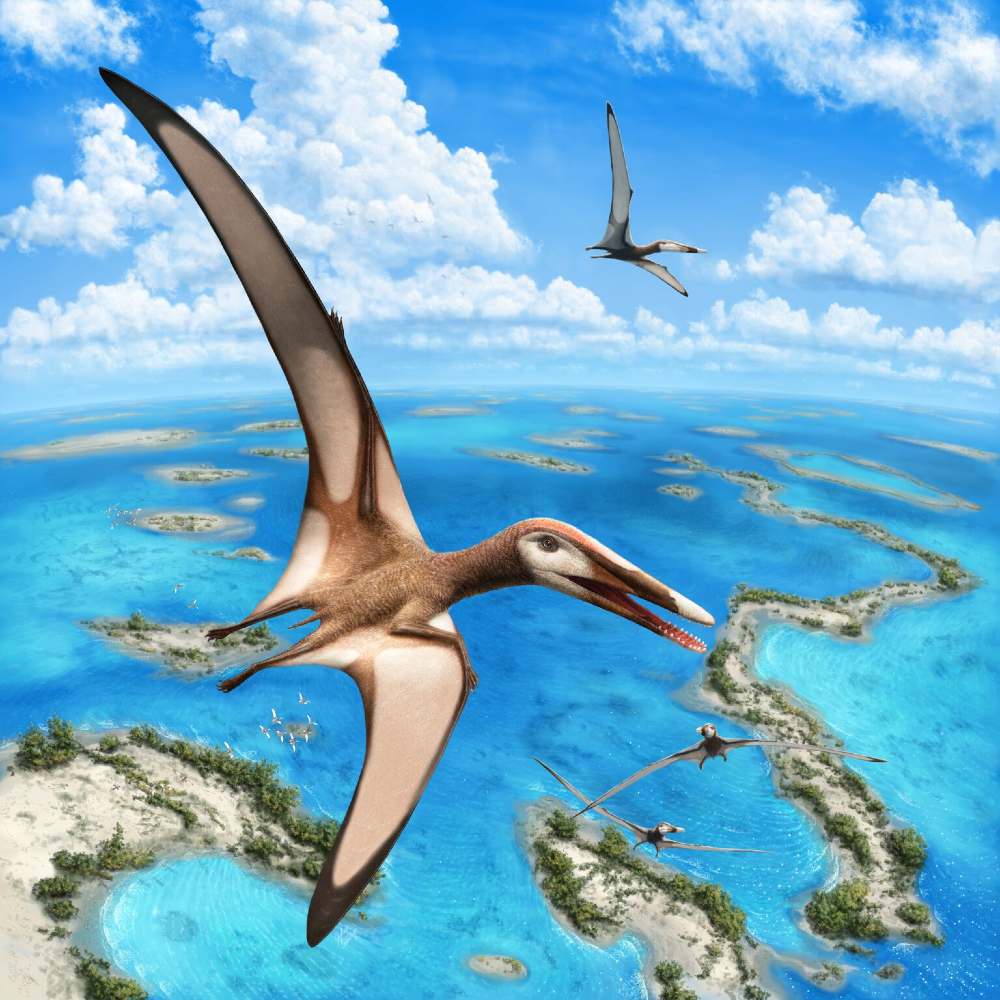
Pterosaurs fly over a shallow seaway dotted with reefs and lagoons. Research by an international team of paleontologists is shedding new light on how, and where, these ancient flying reptiles lived. Illustration by Julius Csotonyi.
New research suggests that ancient flying reptiles known as pterosaurs were much more diverse than originally thought, according to a new study by an international group of paleontologists including scientists at the University of Alberta and the Museu Nacional in Rio de Janeiro, Brazil.
The research describes an ancient and extremely well-preserved pterosaur specimen originally discovered in a private limestone quarry in Lebanon more than 15 years ago.
"The diversity of these ancient animals was much greater than we could ever have guessed at, and is likely orders of magnitude more diverse than we will ever be able to discover from the fossil record," said Michael Caldwell, co-author and professor in the Department of Biological Sciences and the Department of Earth and Atmospheric Sciences.
Results also suggest that this particular type of pterosaur likely fed on crustaceans, flying on long, narrow wings and catching its prey at the surface as do modern seabirds such as the albatross and frigatebird.
"Pterosaur specimens, the first vertebrates to achieve powered flight, are still quite rare in the African continent," said Alexander Kellner of the Museu Nacional and professor at the Federal University of Rio de Janeiro. "Here we describe the best preserved material of these group of flying reptiles known from this continent so far, shedding new and much needed light on the evolutionary history of these volant creatures."
The new pterosaur lived 95 million years ago in early part of the Late Cretaceous, in the middle of what is now called the Tethys Seaway-a vast expanse of shallow marine waters filled with reefs and lagoons, separating Europe from Africa and stretching all the way to Southeast Asia. The study finds that these pterosaurs living in the Tethys Seaway are related to those from China.
"This means that this Lebanese pterodactyloid was part of a radiation of flying reptiles living in and around and across the ancient Tethys Seaway, from China to a great reef system in what is today Lebanon," explained Caldwell.
The specimen is now housed in the Mineralogy Museum at Saint Joseph's University in Beirut-the oldest university in Lebanon-and a cast of the specimen resides at UAlberta. The research was conducted with Kellner and Roy Nohra of Saint Joseph's University in Beirut, Lebanon. This research was conducted in collaboration with the ICP Catalan Institute of Palaeontology Miquel Crusafont in Barcelona, Spain and Expo Haqel in Haqel, Lebanon.
The paper, "First complete pterosaur from the Afro-Arabian continent: insight into pterodactyloid diversity," is published in Scientific Reports (doi: 10.1038/s41598-019-54042-z).